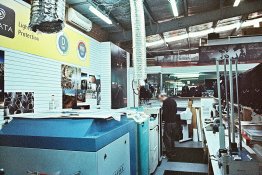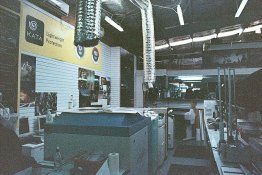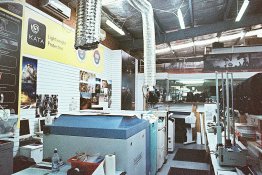Thought I'd share this here too, negs were scanned on a frontier, which is very similar to how prints turn out (think fixed contrast grade, cant adjust, only density adjustments (exposure) and colour balance/filtration of a less fine degree then printing offers).
Developing method was C-41 + 600mg/L of Potassium Thiocyanate (thought this may give me extra speed) for a time of 6 minutes, followed up by a sodium carbonate bath to continue shadow development (although skip this, all it does is increase base fog, I forgot about that in C-41). You can also safely leave out the KSCN, I was experimenting.
This was also a preflashing experiment. The ideal preflash looks like 2 stops below camera middle grey reading at the rated EI of 12800. So if you set your meter to 12800, meter through whatever you're shooting your preflash with, and subtract 2 stops, you're there.
I would like to apply this to Portra 400 in the future, knowing the kind of push results I get at 1600, it may worth be trying at 6400 with preflash
These shots are all from the same roll. The metering for preflash was done through the camera meter (AE-1) through a tissue held tight over the lens, as was the exposure through the same tissue. The preflash was done prior to the scene exposure.
3200 no preflash

12800 no preflash

12800 + preflash Z1 (middle grey reading @ 12800 - 4 stops)

12800 + preflash Z2 (middle grey reading @ 12800 - 3 stops)

12800 + preflash Z3 (middle grey reading @ 12800 - 2 stops)

It doesn't matter whether printing or scanning, it should be clear the preflash method offers superior results to pushing alone, as it simply isn't about compressing shadow range to make it more printable, it helps put shadow detail onto the neg that simply doesn't exist at all, and it appears the contrast increase of the push helps alleviate scale compression from putting maximum and minimum exposure ever closer together with a preflash, so it appears a good combination.
Developing method was C-41 + 600mg/L of Potassium Thiocyanate (thought this may give me extra speed) for a time of 6 minutes, followed up by a sodium carbonate bath to continue shadow development (although skip this, all it does is increase base fog, I forgot about that in C-41). You can also safely leave out the KSCN, I was experimenting.
This was also a preflashing experiment. The ideal preflash looks like 2 stops below camera middle grey reading at the rated EI of 12800. So if you set your meter to 12800, meter through whatever you're shooting your preflash with, and subtract 2 stops, you're there.
I would like to apply this to Portra 400 in the future, knowing the kind of push results I get at 1600, it may worth be trying at 6400 with preflash
These shots are all from the same roll. The metering for preflash was done through the camera meter (AE-1) through a tissue held tight over the lens, as was the exposure through the same tissue. The preflash was done prior to the scene exposure.
3200 no preflash

12800 no preflash

12800 + preflash Z1 (middle grey reading @ 12800 - 4 stops)

12800 + preflash Z2 (middle grey reading @ 12800 - 3 stops)

12800 + preflash Z3 (middle grey reading @ 12800 - 2 stops)

It doesn't matter whether printing or scanning, it should be clear the preflash method offers superior results to pushing alone, as it simply isn't about compressing shadow range to make it more printable, it helps put shadow detail onto the neg that simply doesn't exist at all, and it appears the contrast increase of the push helps alleviate scale compression from putting maximum and minimum exposure ever closer together with a preflash, so it appears a good combination.
Last edited by a moderator:














